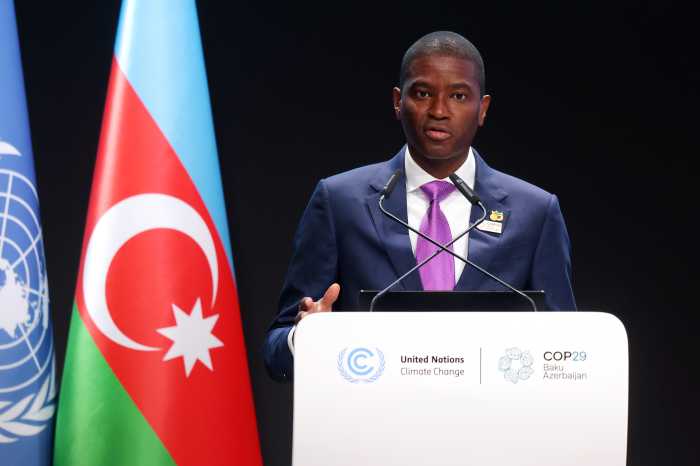City officials may scrap a long in-the-works plan to bury two massive sewage tanks beneath Gowanus Canal–adjacent land — some of which officials recently seized via eminent domain — and instead construct a giant tunnel to collect storm-water runoff in the cisterns’ place, according to Feds with the Environmental Protection Agency.
“Recently we’ve had the city approach us to advance a concept of replacing a tank with an alternate structure, a tunnel or series of tunnels,” agency employee Pete Lopez told members of the Gowanus Community Advisory Group at a Nov. 27 meeting. “That’s newly on our desk — we are trying to understand the pros and cons of that.”
The plan to install the eight- and four-million-gallon water-storage tanks is part of the Superfund site’s federally led cleanup, and the city first announced it back in 2013.
Earlier this year, Council in April signed off on the use of eminent domain to seize neighboring Butler and Nevins street lots along the waterway as the site for the larger tank and a filtration facility called a headhouse above it.
And in May, officials from the city’s Department of Environmental Protection unveiled designs for the headhouse — which will go up on the Butler Street land where the ancient Gowanus Station building currently stands — and an adjacent open-air public space on the Nevins Street plot, along with plans to bury the smaller tank on city-owned land near Second Avenue and the Fourth Street Turning Basin.
But now, the environmental agency wants to ditch its cistern scheme, and instead build one long tunnel 125 to 150 feet below the dirt, which would run along the path of the fetid waterway from beneath the headhouse to the proposed site of the smaller tank.
The tube would function similarly to the tanks, collecting storm-water and liquid-waste from local pipes that would otherwise flood the canal during heavy rains, after the filthy wet stuff is filtered through the headhouse. But the tunnel could hold roughly 16-million gallons of water — four million more than the tanks can accommodate, according to a city engineer.
“What we have essentially proposed is a tunnel that basically starts at [the land] that we recently acquired — then we’d bore towards the other site,” said Department of Environmental Protection official Kevin Clarke. “The storage volume would be more than the combined storage of the two tanks.”
The city proposed swapping tanks for tunnel to try and shave some costs off the project, as well as to reduce the amount of construction involved and to build infrastructure that can store more water, according to Clarke.
“To be perfectly honest, it came down to cost,” he said. “As that cost continued to increase, the tunnel looked more attractive. That was a lot of our motivation, potentially pivoting to the tunnel could add some benefits to scalability, additional [sewage and water] capture, potentially less footprint.”
The original plan, including the land acquisition, construction of the headhouse, creation of the public space, and installation of both tanks, would cost a whopping $1.2 billion. Clarke, however, did not give a price tag for the tunnel.
One local member of the Advisory Group cheered the tube proposal, because he said it could help preserve the Gowanus Station building — most of which is now slated for the wrecking ball, except for parts of its brick facade that officials said they will incorporate into the future headhouse.
“Obviously moving everything 20 feet south and saving the whole building, I think would be the entire [adivsory group’s] preference,” said Peter Reich. “If we’re going conceptual after years of frustration about exactly what piece furniture can go on top of the tank, and now there is no tank, we’d really love to save the building and reconsider the placement of everything just a little bit.”
But others questioned the city’s motives for proposing what is essentially an entirely new project after spending years peddling their previous billion-dollar tank plan.
“It is surprising to hear of this immensely ambitious project this late,” Mark Karkowski said during the meeting.
Officials did not give a deadline for their decision on the tunnel versus the tanks, but must make up their minds soon to prevent further delays to the slow-going cleanup of Brooklyn’s Nautical Purgatory, according to an Environmental Protection Agency bigwig, who said engineers are already at work on designs for the cisterns.
“The design would have to be made in the relatively near future because whatever delay might occur by switching horses in the middle of the stream obviously would be exacerbated if we don’t make that decision,” said Walter Mugdan. “Designs for the tanks will proceed. If the city on its own is choosing to now flesh out a design for the tunnel, that is its own prerogative.”
























